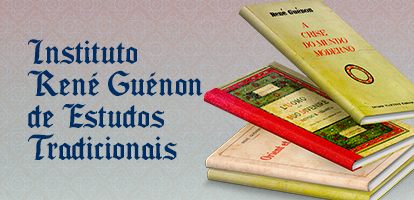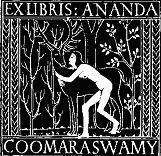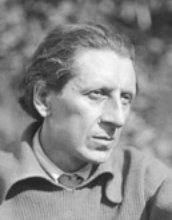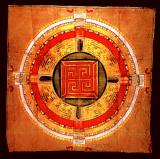1906: Anglicisation of the East, en «Ceylon National Review» (Colombo), I, pp. 181-195.
1907: The Deeper Meaning of the Struggle, Essex House Press, Broad Campden.
1908: Mediaeval Sinhalese Art, Essex House Press, Broad Campden, 2ª. ed. revisada y ampliada, Nueva York 1956.
1908a: The Message of the East, Ganesh Press, Madrás.
1909: Essays in National Idealism, Colombo Apothecaries Co. Ltd., Colombo.
1909a: The Indian Craftsman, prefacio de C. R. Ashbee, Probsthain, London.
1910: Indian Drawings, India Society, Essex House Press, London.
1910a: Art and Swadeshi, Ganesh Press, Madrás.
1910b: Selected Examples of Indian Art, Essex House Press, Broad Carnpden; Reimpresión: Today & Tomorrow's Printers & Publishers, Nueva Delhi, 1971.
1911: Art and Swadeshi, Ganesh Press, Madrás
1912: Indian Drawings: 2ªserie, Chiefly Rajput, India Society, Essex House Press, London.
1913: The Arts and Crafts of India and Ceylon, Foulis, Edimburgh. Reimpresión: Noonday Press, Nueva York 1964.
1913a: Myths of the Hindus & Buddhists, en colaboración con Sister Nivedita, Harrap, London. Reimpresión: Dover Publications, Inc., Nueva York, 1967.
1914: Vishvakarma: Examples of Indian Architecture, Sculpture, Painting, Handicraft, First Series: One Hundred Examples of Indian Sculpture, Introduction by Eric Gill, Luzac, London 1912-14. Reimpresión: Munshiram Manoharlal, Nueva Delhi, 1978.
1916: Buddha and the Gospel of Buddhism, Putnam, Nueva York. Reimpresión: Harper & Row, Nueva York 1964.
1916a: Rajput Painting, 2 voll., Oxford University Press, London. Reimpresión: Motilal Banarsidass, Nueva Delhi, 1977.
1917: The Mirror of Gesture: Being the Abhinaya Darpana of Nandikesvara, trad. ingl. A. K. Coomaraswamy e Gopala Kristnayya Duggirala, Harvard University Press, Cambridge, Mass.; 2a ed. con nuova introduzione: Nueva York, 1936. Reimpresión: Munshiram Manoharlal, Nueva Delhi.
1918: The Dance of Siva, Sunwise Turn Press, Nueva York; ed. revisada: Sagar Publications, Nueva Delhi 1976; trad. fr. Madeleine Roland: La Danse de Shiva, con un prólogo de Romain Roland, Rieder, Paris 1918. Reimpresión: Editions Awac, Rennes 1979.
1923: Catalogue of the Indian Collections in the Museum of Fine Arts, Boston, Part I: General Introduction - Part II: Sculpture, Boston Museum of Fine Arts. Reimpresión: Bharatiya Publishing House, Delhi, Varanasi, 1978; trad. fr. Jean Buhot: Pour comprendre l'art Hindou (Bossart, Paris, 1926). Reimpresión: Editions Awac, Rennes 1979.
1923a: Introduction to Indian Art, Theosophical Publishing House, Madrás. Reimpresión: Munshiram Manoharlal, Nueva Delhi 1969.
1924: Catalogue of the Indian Collections in the Museum of Fine Arts, Boston. Part 4: Jaina Paintings and Manuscripts, Boston.
1925: Bibliographies of Indian Art, Boston Museum of Fine Arts, Boston.
1926: Citra-laksana (Silparatna, c. 64), in Sir Ashutosh Mukerjee Memorial Volume, Patna 1926-1928.
1927: Catalogue of the Indian Collections in the Museum of Fine Arts, Boston. Part 5: Rajput Painting, Boston.
1927a History of Indian and Indonesian Art, Karl W. Hiesemann, Leipzig; Goldston, London; Weyhe, Nueva York. Reimpresión: Dover Publications, Inc., Nueva York 1965. Reimpresión: Munshiram Manoharlal, Nueva Delhi, 1972.
1927b: The Origin of the Buddha Image, «Art Bulletin», IX, 4 (1927). Reimpresión: Munshiram Manoharlal, Nueva Delhi, 1972, 1980.
1928: Yaksas, I, Smithsonian Miscellaneous Collections, Washington. Reimpresión (junto a Yaksas II): Munshiram Manoharlal, Nueva Delhi 1971, 1993.
1929: Nagara Painting, en «Rupam», 37, 40.
1930: Catalogue of the Indian Collections in the Museum of Fine Arts, Boston. Part 6: Mughal Painting, Boston.
1930a: Early Indian Architecture: I. Cities and City Gates, etc.; II. Bodhigharas, en «Eastern Art», II, pp. 208-235, 45 figuras.
1930b: One Hundred References to Indian Painting, in «Artibus Asiae», 1930-1932, pp. 41-57.
1930c: Further References, «Artibus Asiae», 1930-1932, pp. 126-129.
1931: Early Indian Architecture: III. Palaces, in «Eastern Art», III, pp. 181-217, 84 figs.
1931a: An Early Passage on Indian Painting, in «Eastern Art», III, pp. 218-219.
1931b: Yaksas, II, Smithsonian Institution Publication, 3059 Reimpresión (junto a Yaksas I): Munshiram Manoharlal, Nueva Delhi 1971.
1932: Visnudharmottara (III), in «Journal of the American Oriental Society», LII.
1933: A New Approach to the Vedas: An Essay in Translation and Exegesis, Luzac, London; trad. fr. Une nouvelle approche des Vedas. Essai de traduction et d'exégèse, Arché, Milano 1994.
1933a: Hindu Sculpture, in «The League», V, 3.
1934: The Transformation of Nature in Art, (2ª ed. 1935), Harvard University Press, Cambridge, Mass. Reimpresión: Dover Publications, Nueva York 1956, 1934a: "Kha" and Other Words Denoting 'Zero', in «Bulletin of the School of Oriental Studies», VII, pp. 487-497, retomado en 1977a.
1934b: The Technique and Theory of Indian Painting, en «Technical Studies», III, pp. 59-89, 2 figs.
1935: Elements of Buddhist Iconography, foreword by Walter E. Clark, Harvard University Press, Cambridge, Mass. Reimpresión: Munshiram Manoharlal, Nueva Delhi 1972, 1979.
1935a: Mediaeval Aesthetic: 1. Dionysius the Pseudo-Areopagite and Ulrich Engelberti of Strassburg, «Art Bulletin», XVII, pp. 31-47, retomado en 1977: «The Mediaeval Theory of Beauty».
1935b: La Sculpture de Bodhgaya, Ars Asiatica, N. 18, Paris.
1935c: The Mediaeval Theory of Beauty, en «Art Bulletin», XVII, 1935 y XX, 1938, retomado en 1977.
1935d: Angel and Titan: An Essay in Vedic Ontology, en «Journal of the American Oriental Society», LV, pp. 373-419.
1935e: Châyâ, in «Journal of the American Oriental Society», LV, pp. 278-283.
1935f: The Darker Side of Dawn, en «Smithsonian Miscellaneous Collections», XCIV.
1935g: The Intellectual Operation in Indian Art, «Journal of the Indian Society of OrientaI Art», III (1935), pp. 1-12, retomado en 1977.
1936: A Note on the Asvamedha, en «Archiv Orientali», VII, pp. 306-317.
1936a: Nirukta - Hemeneia, en «Etudes Traditionelles» (Paris), retomado en 1977a.
1936b: Two Passages in Dante's "Paradiso", en «Speculum», XI.
1936c: Vedic Exemplarism, en «Harvard Journal of Asiatic Studies», I, pp. 44-64, retomado en 1977a.
1937: The Tantric Doctrine of Divine Biunity, in «Annals of the Bhandarkar Oriental Research Institute», n. 19 (1938), trad. fr. En «Etudes Traditionelles» (Paris), n. 42 (1937).
1937a: The Pilgrim's Way, in «Journal of the Bihar and Orissa Research Society», XXIII, pp. 452- 471.
1937b: Rebirth and Omniscience in Pali Buddhism, en «Indian Culture», III, I, pp.19-33.
1937c: The Vedic Doctrine of "Silence", in «Indian Culture», III.
1937d: Beauté, Lumière et Son, «Etudes Traditionelles» (Paris).
1937e: La Vierge allaitant saint Bernard, en «Etudes Traditionelles», (Paris).
1938: Asiatic Art, The New Orient Society of America, Chicago, retomado en 1977b.
1938a: Mediaeval Aestheric: II. Sr. Thomas Aquinas on Dionysius, and a Note on the Relation of Beauty to Truth, «Art Bulletin», XX, pp. 66-77.
1938b: Notes on the Katha Upanisad, en «New Indian Antiquary», I, pp.43-56, 83-108, 199-213.
1938c: The Yaksa of the Vedas and Upanisads, en «Quarterly Journal of the Mythic Society», XXVIII, pp. 231-240.
1938d: Symbolism of the Dome, en «Indian Historical Quarterly», XIV, I.
1939: The Vedanta and Western Tradition, en «The American Scholar», VIII, retomado en 1977a.
1939a: Eckstein, in «Speculum», XIV, pp. 66-72.
1939b: Some Pali Words, en «Harvard Journal of Asiatic Studies», IV.
1939c: The Reinterpretation of Buddhism, en «Harvard Joumal of Asiatic Studies», II.
1940: «Akimcanna: Self-Naughting», New Indian Antiquary, III, retomado en 1977a.
1940a: The Sun-kiss, en «Journal of the American Oriental Society », LX, pp. 46-67.
1940b: Art and Thought, en «The New Indian Antiquary», III.
1941: Lila, en «Journal of the American Oriental Society», LX, retomado en 1977a.
1941a: The 'E' at Delphy, en «Review of Religion», VI, retomado en 1977a.
1942: Spiritual Authority and Temporal Power en the Indian Theory of Government, American Oriental Society, New Haven, Conn. Reimpresión: Kraus, Millwood, NY; trad. fr. Autorité Spirituelle et Pouvoir Temporel dans la perspective indienne du gouvernement, Arché, Milano 1985 (de próxima trad. italiana en Luni).
1942a: On Being en One's Right Mind, en «Review of Religion», VII, pp. 32-40, retomado en 1989.
1942b: Play and Seriousness, en «Journal of Philosophy», XXXIX, pp. 550-552, retomado en 1977a.
1942c: «Atmayajna». Self-Sacrifice, en «Harvard Journal of Asiatic Studies», VI, retomado en 1977a.
1943: Hinduism and Buddhism, Philosophical Library, Nueva York. Reimpresión: Greenwood Press, Westport 1971.
1943a: Why Exhibit Works of Art?, Luzac, London 1943; reimpreso con el título: Christian and Oriental Philosophy of Art, Dover, Nueva York 1956.
1943b: Prana-citi, en «Journal of the Royal Asiatic Society», pp. 105-109.
1943c: The Symbolism of Archery, en «Ars Islamica», X, pp. 104-119.
1944: Recollection Indian and PIatonic, en «Journal of the American Oriental Society», LXIV, supplement n. 3 (1944), retomado en 1977a.
1944a: On the One and Only Transmigrant, «Journal of the American Oriental Society», LXIV, supplement n. 3 (1944), retomado en 1977a.
1944b: Sir Gawain and the Green Knight: Indra and Namuci, en «Speculum», XIX, pp. 104-125.
1944c: The Iconography of Dürer's 'Knots' and Leonardo's 'Concatenation', en «Art Quarterly», VII, pp. 109-128.
1945: Some Sources of Buddhist Iconography, en «B.C. Law Volume», Poona, pp. 469-476.
1945a: What is Civilisation?, The Albert Schweitzer, Subilee Book, A. A. Roback, Cambridge, Mass.
1946: Figures of Speech or Figures of Thought: Collected Essays on the Traditional or «Normal» View of Art, (Second Series), Luzac, London, parcialmente retomado en 1977.
1946a: The Religious Basis of the Forms of Indian Society; Indian Culture and English Influence; East and West, en «Orientalist», Nueva York.
1947: Am I My Brother's Keeper?, The John Day Company, Nueva York. Reimpresión: Arno Press, Nueva York.
1947a: Dr. Coomaraswamy's Talk at His Boston Dinner [The Seventieth Birthday Address], en «Journal of the Indian Society of Oriental Art», XV (1947), retomado en 1977a.
1947b: Time and Eternity, en «Artibus Asiae», serie monográfica, suplemento nº 8, Ascona, Switzerland. Reimpresión: Munshiram Manoharlal Publishers, Nueva Delhi 1988.
1947c: Who Is 'Satan' and Where Is 'Hell'?, en «Review of Religion», XI.
1947d: Athena and Hephaistos, en «The Journal of the Indian Society of Oriental Art», XV; trad. Española: Atenea y Hefesto, en Sobre la doctrina tradicional del arte, Olañeta Editor, Barcelona, 1983.
1948: The Living Thoughts of Gotama The Buddha, con I. B. Horner, Cassel, London.
1956: La Sculpture de Bharhut, Annales du Musée Guimet, Bibliothéque d'Art, n. s. 6, Paris.
1977: Selected Papers I / Traditional Art and Symbolism, a carg de Roger Lipsey, Princeton University Press, Princeton.
1977a: Selected Papers II / Metaphysics, idem.
1977b: On the Traditional Doctrine of Art, Golgonooza Press, Ipswich.
1988: Selected Letters of Ananda Coomaraswamy, Oxford University Press, Oxford
1989: What is Civilization? And Other Essays, éd. Rama Coomaraswamy, avec une préface de Seyed Hossein Nasr, Ipswich, Golgonooza Press.















